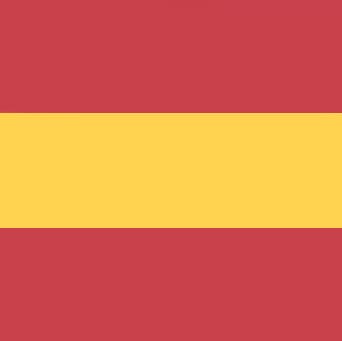
Exploring the Natural Treasure: Chinijo Natural Park in Lanzarote
If you are passionate about nature and adventure, you will love the Chinijo Natural Park. This group of islands and islets, located to the north of Lanzarote, is Europe's largest marine reserveand a haven of exceptional biodiversity, particularly for seabirds.
In this article, you will find everything you need to know to explore the fascinating Chinijo Natural Park, a hidden gem of the Canary Islands.
Fascinating routes to discover Chinijo Natural Park
The Chinijo Natural Park encompasses the island of La Graciosa, the only inhabited island in the archipelago, along with the captivating islets of Alegranza, Montaña Clara, Roque del Este, and Roque del Oeste. These volcanic wonders, formed around 10 million years ago by the activity of the Corona volcano in northern Lanzarote, together create a natural park spanning 9,112 hectares, of which 7,000 are aquatic. Exploring this natural paradise offers a variety of options tailored to your preferences and budget.

A popular route involves taking a ferry from the picturesque port of Órzola in Lanzarote and disembarking at the charming port of Caleta del Sebo on La Graciosa. Covering 29 km², La Graciosa boasts two population centres, Caleta del Sebo and Pedro Barba, as well as stunning beaches like La Francesa, La Cocina, and Las Conchas, featuring golden sands and crystal-clear waters.
Another way to experience the Chinijo Natural Park is by joining an exhilarating boat trip from Lanzarote or La Graciosa. These trips, offered by companies like ours, provide opportunities to explore the islets from the sea, snorkel or dive in crystal-clear waters, and disembark at breathtaking locations. For instance, the islet of Alegranza is home to the oldest lighthouse in the Canary Islands and hosts an abundant colony of seabirds.
You can also visit Montaña Clara, which features the largest volcanic crater in the archipelago, or the remote and rugged Roque del Este and Roque del Oeste.
The perfect time to experience Chinijo Natural Park
While the Chinijo Natural Park showcases its beauty throughout the year, certain times are ideal for specific experiences. During summer, you can enjoy the beaches and warm waters. In spring and autumn, it is perfect for observing the migration of seabirds. Winter offers tranquillity, with fewer tourists, making it an excellent time to find peace and quiet in this natural haven.
Adventures and relaxation in the Natural Treasure Chinijo
The Chinijo Natural Park is a paradise for those who love nature and adventure. Here are some suggestions:

- Walk along trails through volcanic landscapes, taking in the breathtaking panoramic views.
- Observe a diverse array of marine birds, including the storm petrel, Cory's shearwater, Eleonora's falcon, and the Egyptian vulture.
- Dive into the crystal-clear waters to snorkel or scuba dive, discovering the rich marine life.
- Unwind on golden sandy beaches and swim in the turquoise blue sea.
- Explore the charming villages of Caleta del Sebo and Pedro Barba, immersing yourself in the local culture and cuisine.
Chinijo natural treasure curiosities
The Chinijo Natural Park is rich in history, legends, and fascinating curiosities:
- Did you know that it is the largest marine reserve in Europe, home to over 200 species of fish, 135 species of algae, and 22 species of invertebrates?
- Are you surprised to learn that its name, Chinijo, originates from the Canarian word chini, meaning small? This refers to the small size and close proximity of the islands and islets.
- And did you know that the islet of Montaña Clara has a heart shape, thanks to the V-shaped opening of its volcanic crater, visible from the air?
Tips for making the most of the Chinijo Natural Park
Make your visit to the Chinijo Natural Park unforgettable with these practical tips:
Make your visit to the Chinijo Natural Park an unforgettable experience with these practical tips:
- Respect the park's rules, avoiding disturbance to the environment and leaving as little impact as possible.
- Wear comfortable clothing and sturdy footwear suitable for exploring uneven terrain. Don't forget sun protection, a hat, sunglasses, and plenty of water.
- If you plan to dive or snorkel, bring your own equipment or rent from authorised centres, ensuring you respect the marine flora and fauna.
- Before visiting the islets, check the weather and sea conditions. Follow the guides' instructions and stay close to your group.
- If you intend to spend the night on La Graciosa, book your accommodation in advance to enjoy the island’s tranquillity and savour its delicious gastronomy, featuring fresh fish and local produce.
If this trip has inspired you, share it with friends and family and venture into the natural wonder that is the Chinijo Natural Park!











